Weeping larch: description, planting and care
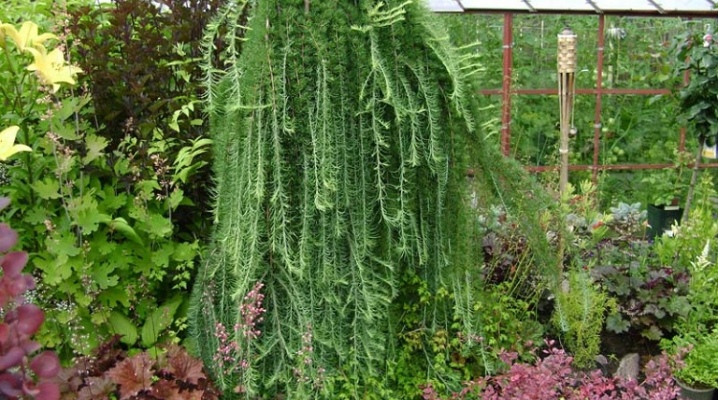
If you are thinking about which plant to use to decorate the site, then you should pay attention to larch. This plant has an unusual appearance, so it will catch the eyes of not only your household, but also neighbors, as well as bystanders.

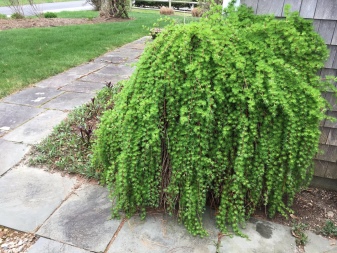
Features and varieties
Larch is a tree that belongs to the class of Conifers, the division Gymnosperms. One of the most popular and widespread varieties of larch is weeping larch. This plant is often used to decorate areas in landscape design. The main advantage of using a plant in landscape design is the fact that the plant practically does not create shade, so low-growing flowers can be planted at its base.
Important! It should be noted that among gardeners and landscape designers, dwarf varieties of weeping larch related to the Pendula form are most common. The Japanese variety is also popular.
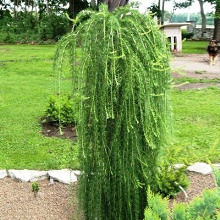
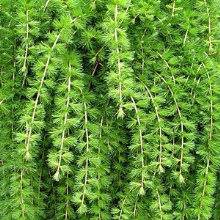
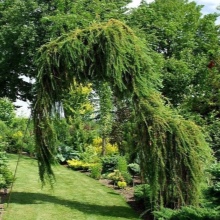
A distinctive characteristic of the weeping larch on the trunk is its unusual hanging crown. In order for the tree to fully fulfill its decorative role, its crown is formed by pruning and shearing. In addition, for this purpose, another mandatory procedure for grafting a tree is carried out. If you follow the instructions and advice of botanical scientists and experienced gardeners, you will end up with a healthy, beautiful and strong tree with a straight trunk and branches growing vertically downward.
The height of the plant can vary significantly depending on the specific variety, place of growth, and care measures. So, weeping larch can reach from 1 to 8 meters. The tree grows rather slowly - in a year it can add no more than 20 centimeters in crown volume and 30 centimeters in height.
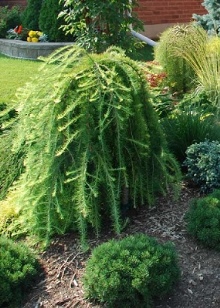
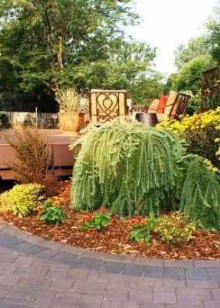
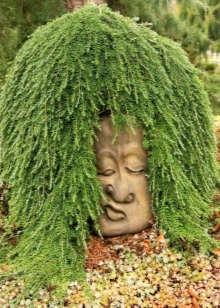
In the spring period of development, bunches of needles may appear on larch. The needles of the tree are quite soft to the touch, and by themselves they can be painted in a wide variety of shades of green and light green colors. The shoots of the plant are very thin and heterogeneous in structure, while a large number of various tubercles, processes and other irregularities can be located on them. After the weeping larch is finally ripe, it begins to form cones, which are subdivided into male and female.
They differ not only in internal structure and organic features, but also in appearance. So, it is the female cones that are considered more aesthetically attractive. Their color is dominated by bright and rich shades, and by themselves they resemble a pink inflorescence (bud or blossoming flower).
By the fall, the needles of weeping larch gradually begin to turn yellow, and then completely fall off.
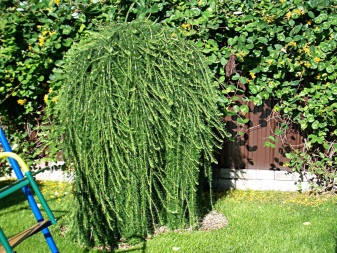
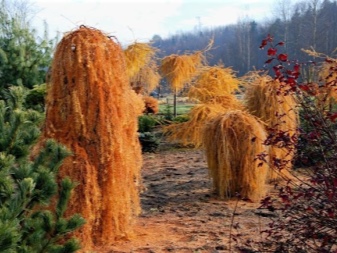
Today scientists count several types of larch. Consider the most popular and beautiful ones, namely:
- Repens - this variety is characterized by unusual branches that spread along the ground;
- "Bullets" - this species forms light green shoots that reach the surface of the earth;
- "Kornik" - the height of the plant is rather small, the larch has an incredibly beautiful crown, which has a spherical shape and is painted in a rich emerald hue;
- "Kreichi" - the variety differs from all others in its miniature size (up to 1 meter in height) and a fluffy crown of irregular shape;
- "Gray Pearl" has a dense rounded crown and is characterized by a very slow growth process;
- "Blue Dwarf" - tree shoots are versatile.
- "Bambino" - this variety has the smallest dimensions among all the varieties described above, and also has needles, the color of which varies between blue and green;
- Wolterdingen - the maximum height of larch is about 0.5 meters.
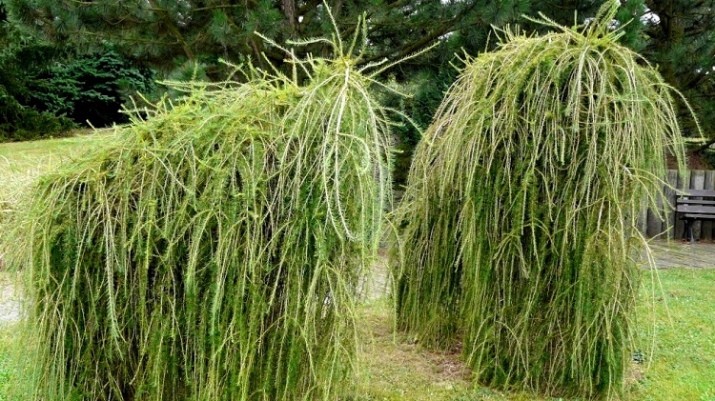
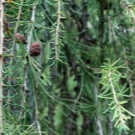
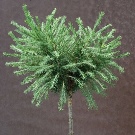
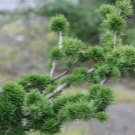
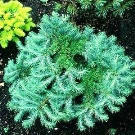

How to plant?
As you know, planting largely determines the future growth and development of any plant. In order for the larch planted by you to meet all your hopes, it is important to carefully consider the choice of the planting site. So, the site should be sunny or in partial shade. As for the soil mass, it must be light and drained without fail. If you do not have a lot of choice regarding the soil, and you only have acidic soil at your disposal, then it is important to carry out the necessary drainage and liming procedures before planting. It is worth noting that it is not recommended to plant larch in sandy soil, since the plant is very likely to die.
For planting, it is allowed to use only those seedlings whose age does not reach two years. Typically, such specimens are sold in containers, while their root system is in a closed state.


Among other things, in order for the landing to be successful, several mandatory rules must be followed.
- First of all, you need to prepare a suitable hole in size. Its dimensions should be 2 times larger than the earthen clod of the seedling that you purchased.
- It is necessary to prepare a suitable soil mixture: it should consist of soil, peat, humus or compost (in this case, it is necessary to observe the proportions of 1 to 1 to 2). It is worth paying attention to the fact that if the soil is clay, then it is recommended to add a small amount of sand to the soil mixture.
- After all the preparatory work has been carried out, the seedling is placed in the hole, covered with soil mixture, and then the surface is tamped on top and watered.
Important! The depth of the hole should be at least 80 centimeters, and if you are planting several plants at once, then there should be a distance of at least 2 meters between them. Only in such conditions will larch be able to actively grow and develop.
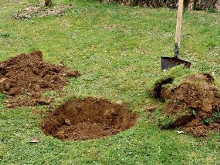
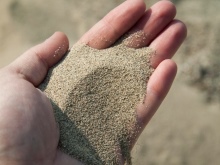
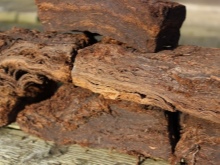
How to take care of it properly?
Caring for weeping larch is simple. However, at the same time, it is necessary to take care of the exact implementation of all recommendations. It should be understood that planting is only the first step. Grooming measures are also important and necessary.
- First, you should familiarize yourself with the watering rules. Weeping larch needs abundant and systematic moisture. If the plant grows in a dry climate (for example, in the south of the country), then the required amount of watering is 2 buckets of water 2 times a week. However, during the rainy season, watering is not needed.
- In order for the development process to proceed more actively, you need to take care of the introduction of dressings and fertilizers. The best option in this regard would be a mixture of potash or phosphorus fertilizers. And you can also use compost, urea, complex fertilizers for conifers or the nutrient composition of "Kemir". All of these substances can be purchased at gardening stores or online. It is recommended to apply fertilizers in the first years of the tree's life in the spring.
- Mandatory measures also include mulching and loosening processes. So, mulching should be done after planting and watering around the post. Thus, you will protect the tree from drying out.For mulching, you can use pine bark, peat or humus (in the latter case, you will carry out 2 procedures at the same time - mulching and fertilization). The loosening procedure is recommended not to be carried out too deeply - by 20 centimeters.
- To keep the tree beautiful and healthy, you need to carry out regular pruning and bark formation. There are such types of similar procedures as:
- shaping haircut is carried out in the spring, according to its results the tree becomes lush and bushy; shaping is especially important for young plants;
- rejuvenating - in its course you need to remove all weak shoots, and healthy ones - shorten by one third;
- sanitary pruning is carried out if the plant has been exposed to harmful microorganisms, pests or diseases.
Important! To protect the weeping larch from the cold, it must be covered with a non-woven material.
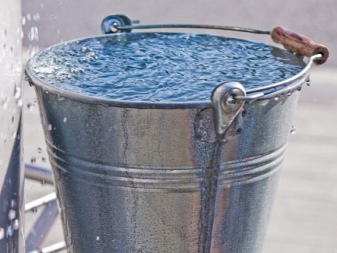
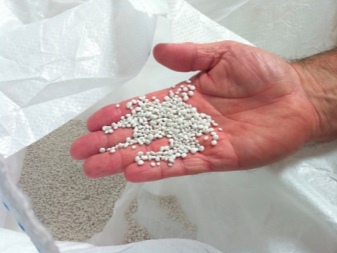
Reproduction methods
Propagate weeping larch can be done in several ways.
- Cuttings. In order to propagate a tree using cuttings, you must have special knowledge. That is why this method is used by specialists in nurseries. The method is quite laborious.
- Seeds. You can also root weeping larch in your area using seeds. To do this, you need to take mature buds, separate the seeds from them and soak for 14 days. Sowing seeds is recommended in a special mixture of sand and sawdust. After sowing, remember to moisturize the plant well. After the first shoots sprout, you need to plant them in large containers, and after a year you can plant larch in open ground in the way described above.
- Vaccinations. The method of propagation by grafting is used in the event that they want to maintain the purity of the variety. To do this, on a young tree, you need to make an incision in the vertical direction, place the stalk in this incision with the buds, and then bandage it.

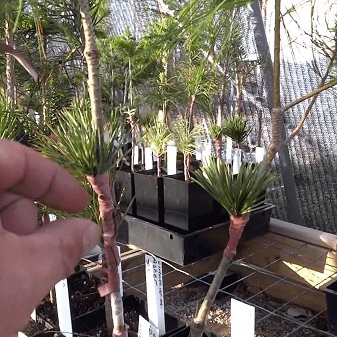
Use in landscape design
With the right and careful approach, the use of weeping larch will help create an unusual green oasis on your site. The tree can be planted both independently (for example, along the path or near the entrance to the house), or added to other ready-made plant compositions. For example, weeping larch is often used for the design of alpine slides, gazebos, flower beds, hedges... Weeping larch will look great in combination with other conifers, especially dark ones.
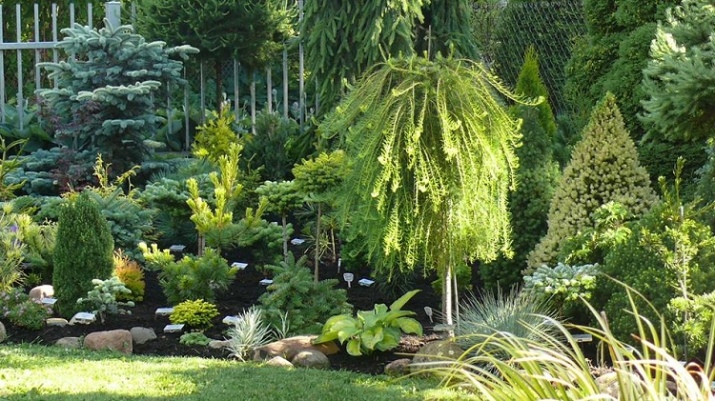
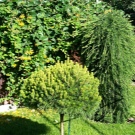
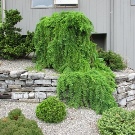
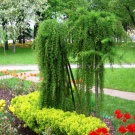
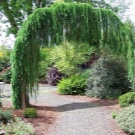
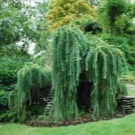
For information on how to properly care for a weeping larch, see the next video.































































The comment was sent successfully.